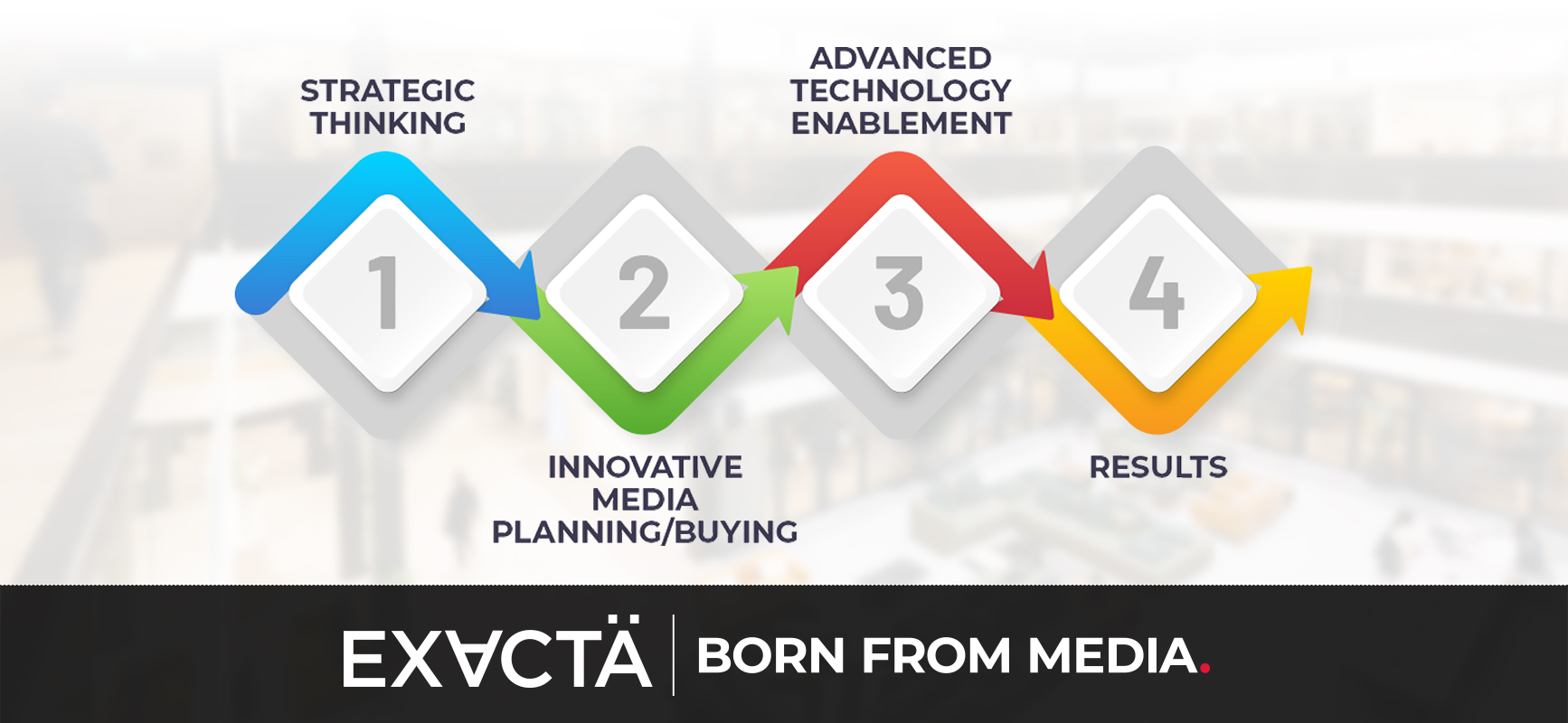

Insights from the EXACTA Media team
Performance marketing offers measurable, results-driven growth where every dollar spent delivers a return on investment. This strategy is all about capturing target audience action, whether it’s clicks, conversions, or sales. To achieve consistent success in performance marketing channels there are some proven best practices that can help marketers maximize campaigns.
Keep reading to learn more about performance marketing, benefits of the strategy, and our media team’s five best practices to drive impactful results.
What is performance marketing?
Performance marketing is a digital media marketing strategy where advertisers pay only when the target audience completes a specific action or when a goal is met. Performance marketing is offered through numerous channels including pay-per-click (PPC) placements, affiliate marketing, social media marketing, influencer partnerships, and search engine marketing (SEM).
Instead of paying for the placement (like much traditional advertising), brands are invoiced based on how well the ad performs. Here are some common types of metrics that can be used:
Cost Per Click (CPC) – Advertisers pay based on the number of times an ad is clicked.
Cost Per Impression (CPM) – Advertisers pay for every thousand views.
Cost Per Sale (CPS) – Advertisers only pay when a sale is completed and can be tracked back to a placement.
Cost Per Lead (CPL) – Similar to CPS, advertisers only pay when someone signs up for something including emails, newsletters, webinars, or complete another desired action.
Benefits of performance marketing
Worldwide digital marketing only keeps growing, with 2024 expected to see a staggering $645.8 billion in spend. That means a lot of content and a lot of competition.
 Image credit: Statista
Image credit: Statista
Using a performance marketing approach can provide brands with several benefits as they cut out a piece of digital marketing action for themselves. Shopify notes these four advantages:
Cost-effective campaigns – You only pay for success! When the target audience takes the desired action, be that a click, an email signup, or other wanted outcome, then the brands pay. If the placement doesn’t perform, the budget is not affected.
Measurability – Channels track metrics in real time and that means that you can easily evaluate and optimize campaigns quickly to ensure strong execution.
Targeted reach – Adjust and connect with specific target audiences so that the right people are seeing your ads at the right time.
Flexibility – Put the measurability to work and pivot strategies as needed. You can also scale up or down according to goals and budget.
Take advantage of these benefits and more with our top five best practices for performance marketing.
- Align business/client goals with marketing objective and set KPIs
Matching your company goals to your marketing strategy is a best practice for all marketing initiatives, but it’s surprising how often this step can be missed. Take some time to complete an audit and check in with your company (or your client). What are the primary business goals? Set KPIs that reflect those goals. Investigate previous marketing performance, then develop a new performance marketing plan from there. This could mean aiming to increase visits to your website, drive app downloads, raise brand awareness, generate leads/email sign ups, or boost online sales. - Define your audience
Research your target audience including key pieces of information such as demographics, income, education level, interests/hobbies, behaviors, pain points, media consumption habits, and preferred online channels. Use this wealth of data to develop sample personas to guide your marketing message and placements. - Deploy a paid platform strategy that best meets objectives
Circle back to your KPIs and target audience and draft a strategy that best reaches your audience to move the needle toward your goal. There are many different avenues for performance marketing placement including PPC, affiliate, email, SEO, social media, and influencer marketing. - Craft relevant creative
Now that you’ve put in all this hard work to set goals, define your audience, and select the right performance marketing channels, be sure that your creative is on point. Use your personas to create personalized messaging to enhance engagement and cultivate a relationship with your customer. You can also A/B test creative and see what works best and optimize from those data sets. Switch out subject lines, key copy points, images, and even the call-to-action (CTA) to narrow in on the best creative possible. - Measure and track results against KPIs
How will you know if your marketing is working? Measure and track results! Determine the success of your performance marketing campaign by looking at the metrics and comparing them to your goals — whether that is more clicks, more traffic to your website, building brand awareness, boosting sales, or another benchmark. One of the easiest ways to measure performance is by looking at cost-per metrics mentioned above such as CPC, CPI, CPS, CPM, and CPL.
Top performance
By following these five best practices, you can elevate performance marketing campaigns, ensuring that every effort is aligned with clear, measurable goals. Performance marketing campaigns often provide a wealth of data and trackable results, so if you’re able to remain adaptable and continuously test, you’ll be able to keep track of results and optimize performance at every opportunity. Employing performance marketing strategies will allow your company to drive sustainable growth and maximize ROI.
Does your business need an agency partner? Learn how EXACTA MEDIA can help. We specialize in end-to-end media management from strategy through buy and optimization. Connect with our team of experts to learn more.


